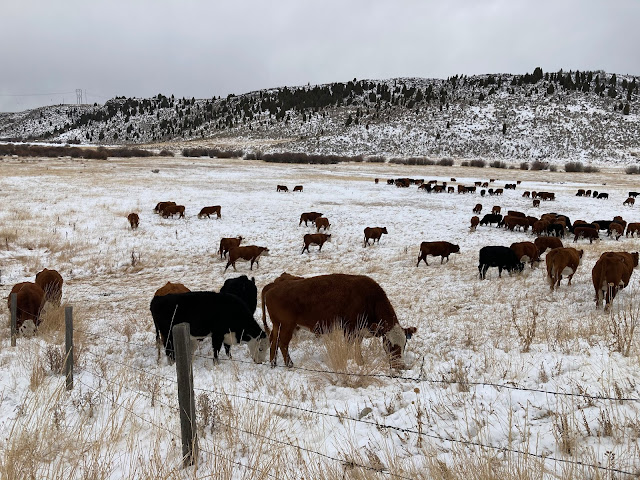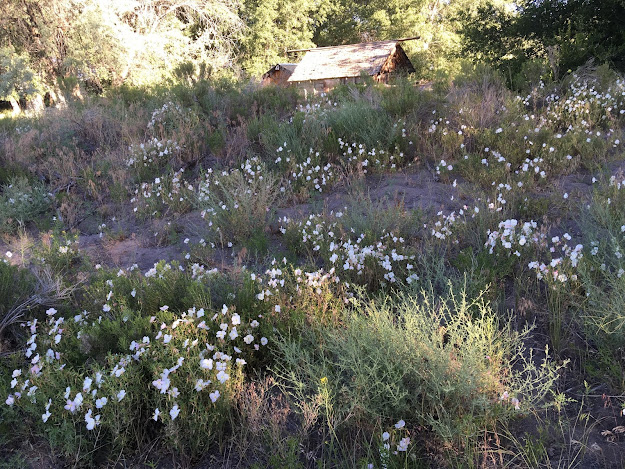We got the cows home. It feels good to have them on good feed and water after their long walk down from the range. And even though they’re working on pastures and heading towards the haystack, it’s nice to have them close by again. I put the lunch cooler, the walkie-talkies and the travel thermos away for the winter. After traveling up and down on washboardy roads all summer, we’re happy to stay put for a few months.
We had beautiful weather in the mountains, sunny and cold, no wind. I had the pleasure of a long leisurely walk behind the herd with my dog keeping the stragglers caught up. Not so leisurely, however, when we got near home and the cattle spread out on fall grain. There was much running, hollering and dogging before we got them lined out again.
When we got to the valley we put the herd in "Lorin's corral," a sturdy set of pipe corrals built by a good cowboy and neighbor who's been trailing cattle in Heaven for some years now. He lives on in perpetuity for all the ranching outfits that use his facility when heading to and from the range. We put them through the pens, sorting off the young cows expecting their first or second calf and anybody that wasn’t bred or that needed attention. The older cows went to one pasture, the younger cows to another.
Mark is amazing. He knows these mothers so well. Better than he knows his own wife. They’re so much easier to read and understand! Each one has a unique ear tag so we can all identify them, but Mark's presence means something more, much more, as each one gets the attention they need. That will be Mark’s legacy, a set of cows that got the best of care.
The kids came home to get Christmas junipers last weekend. Leah, who as a kid enjoyed fresh popcorn and hot cider at the local tree lot, brought these two treats along for us all. How fun is that? She's in for it, though, because now it's a tradition. Callie stuffed two trees in her PT Cruiser to take back to Boise, Cole and Anna got two as well, one for Cole's Mom, and Seth and Leah chose a small one for their cozy home. Mark and I always get a big tree over my objections - too tall to decorate. And here it stands, waiting for him to lug in a ladder to get the lights on. He's in charge of watering it, by the gallons, he says.
Our tree feels and smells so familiar. My folks always had a juniper at Christmas time. The trees were free for the cutting and beyond plentiful in the mountains, even seen as invasive now. Mom had blue lights with star-shaped reflectors surrounding each bulb. And those little carousels hung nearby that twirled from the heat. Remember them? And real-life socks hung on a real-life fireplace. Oh, but the magic of it all.
But here's the deal, wasn’t it just Christmas a few weeks ago?
 |
| three years makes a tradition |
 |
| winter quarters during the homesteading era |
 |
| off the bluff while getting trees |
 |
| on top of my world, no cows up this high |
 |
| starting towards home |











































